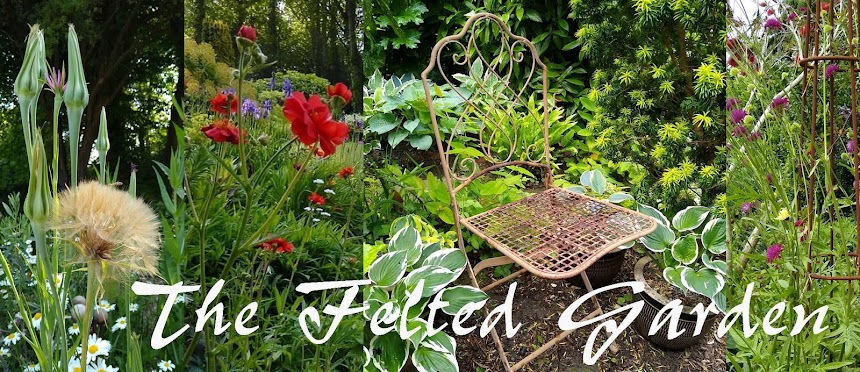After the exciting experiments of the past weeks it’s now time to look at the results
and see how the different elements of FELT and FABRIC have worked together.
The felt pods and pebbles were made with the intention that they would be
decorated. They were the last pieces to be dyed, and I was
hoping for a pale, random-dyed effect to off-set the darker dyed patches...
Here are the finished pods amongst the rocks at Freshwater Bay...
One of the last sunny afternoons this summer,
surrounded by a perfect indigo blue sea...
They have undergone several weeks of stitching and patching using the
new indigo dyed fabrics, combined with sashiko stitch.
Sketches here show the original ideas, and the range of pod shapes I was
hoping to achieve, with the free-style surface decoration...
(click on any photo to see more detail)
Most of the pods were felted using the same round and oval 2-D resists,
some were felted over 3-D plastic forms made from bubble-wrap.
They were a perfect size to work with and I'm delighted with the
finished effects + combinations of felt, fabric and threads,
even some vintage cotton buttons were popped in the dye vat!
The indigo dyed shibori fabrics have given me plenty of material to complete
a number of projects, including my boro-style waistcoat, which has so far
been over 2 years in the making…
I now have some wonderful new indigo + rust dyed pieces to complete the
back panel… with another waistcoat already in the planning stage!
I’ve previously decorated clothes with small boro-type patches and stitch
so I shall continue with this, using my new fabrics….
All my indigo notes and samples, together with those from the rust experiments
of 2017 have been written up in my dyeing notebook…
the rust browns + indigo blues work so well together
With all the indigo activity throughout the summer everything in my house
and wardrobe has turned to shades of blue…
As well as all the shibori fabrics mentioned, various items of clothing -
scarves and aprons found their way into the dye bath!
Finally my indigo BLUE khadi sketchbook is completely dried out,
but still waiting to be re-bound…
...another challenge for another time!
It's been an interesting summer!
The indigo experiments have left me with
plenty of ideas and material to continue stitching into felt and fabric.
I've always loved 3-D felting, with it's endless possibilities!
Now the scope has expanded even further when
dyeing, stitching and applique techniques are incorporated into designs.
So there's a very busy time ahead,
especially as the Autumn Workshops are about to start next week..
.






















































